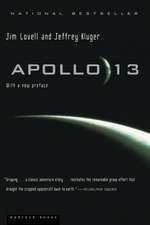Sea Ranch
Autor Susan M. Clarken Limba Engleză Hardback – 30 apr 2009
| Toate formatele și edițiile | Preț | Express |
|---|---|---|
| Paperback (1) | 131.94 lei 3-5 săpt. | |
| Fonthill Media – 30 apr 2009 | 131.94 lei 3-5 săpt. | |
| Hardback (1) | 181.89 lei 6-8 săpt. | |
| Arcadia Library Editions – 30 apr 2009 | 181.89 lei 6-8 săpt. |
Preț: 181.89 lei
Nou
Puncte Express: 273
Preț estimativ în valută:
34.80€ • 36.34$ • 28.81£
34.80€ • 36.34$ • 28.81£
Carte tipărită la comandă
Livrare economică 04-18 aprilie
Preluare comenzi: 021 569.72.76
Specificații
ISBN-13: 9781531638719
ISBN-10: 1531638716
Pagini: 130
Dimensiuni: 170 x 244 x 10 mm
Greutate: 0.41 kg
Editura: Arcadia Library Editions
ISBN-10: 1531638716
Pagini: 130
Dimensiuni: 170 x 244 x 10 mm
Greutate: 0.41 kg
Editura: Arcadia Library Editions
Descriere
Descriere de la o altă ediție sau format:
The Sea Ranch, translated from the Spanish aDel Mar Ranch, a occupies the northwest corner of Sonoma County and is renowned for its architecture and environmental sensitivity. The development of a second-home community in 1965 was just one more chapter in a long history that began in 1846. The Sea Ranch is part of the German Rancho, the most northern coastal Mexican land grant, which was confirmed by the United States following the Treaty of Guadalupe Hidalgo in 1848. It was home to German cattlemen, loggers, and an early-20th-century Russian Baptist colony. Over the years, shepherds, World War II soldiers, and bootleggers have called it home. Early maps and photographs tell the history of the area, and contemporary photographs reveal remnants of historic buildings and sites on the current Sea Ranch landscape.
The Sea Ranch, translated from the Spanish aDel Mar Ranch, a occupies the northwest corner of Sonoma County and is renowned for its architecture and environmental sensitivity. The development of a second-home community in 1965 was just one more chapter in a long history that began in 1846. The Sea Ranch is part of the German Rancho, the most northern coastal Mexican land grant, which was confirmed by the United States following the Treaty of Guadalupe Hidalgo in 1848. It was home to German cattlemen, loggers, and an early-20th-century Russian Baptist colony. Over the years, shepherds, World War II soldiers, and bootleggers have called it home. Early maps and photographs tell the history of the area, and contemporary photographs reveal remnants of historic buildings and sites on the current Sea Ranch landscape.













